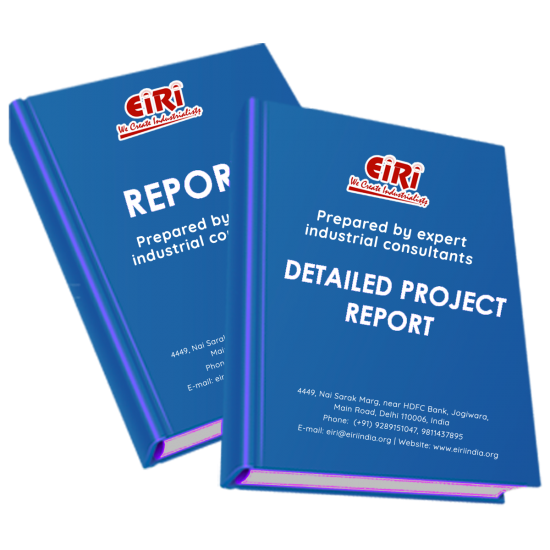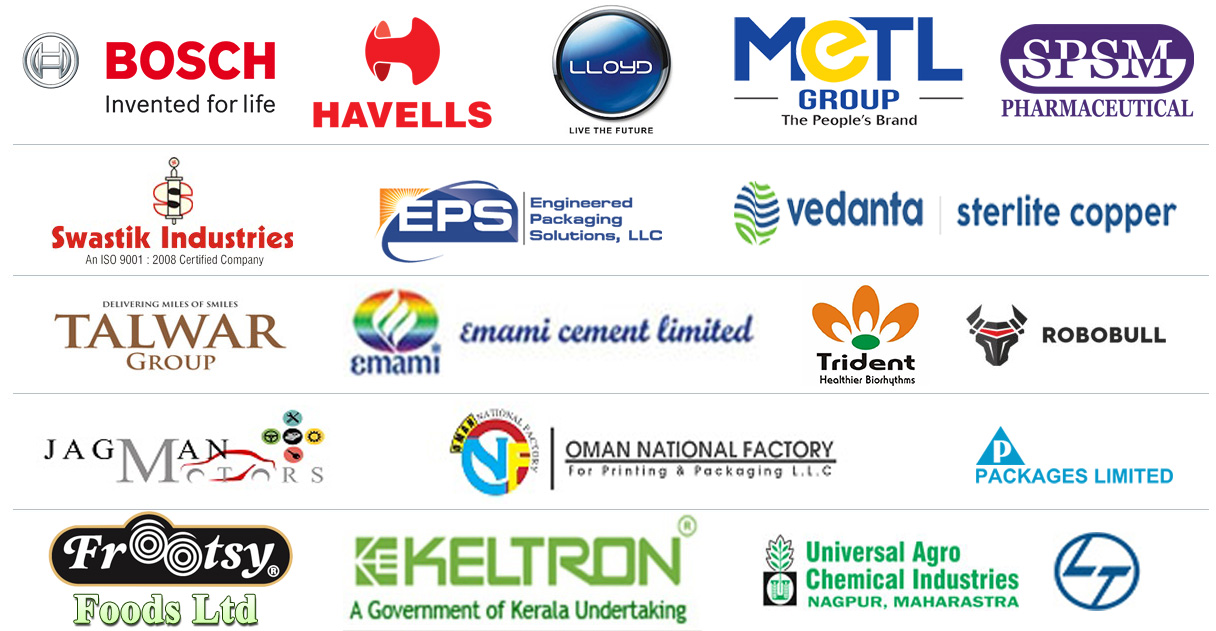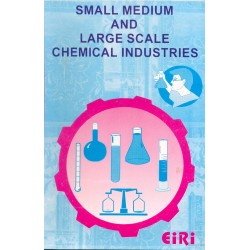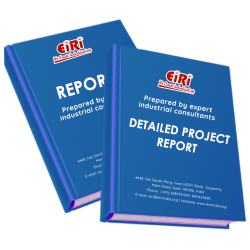Detailed Project Report on mustard cooking oil

- More than 40 years of experience
- Managed by expert industrial consultants
- ISO 9001-2015 Certified
- Registered under MSME, UAM No: DL01E0012000
- 24/5 Research Support
Get your quesries resolved from an industry expert. Ask your queries before report or book purchase. - Custom Research Service
Speak to the our consultant to design an exclusive study to serve your research needs. - Quality Assurance
All reports are prepared by highly qualified consultants & verified by a panel of experts. - Information Security
Your personal & confidential information is safe & secure.
MUSTARD COOKING OIL
[CODE NO.4149]
Indian Edible Oil Industry Vegetable oil and oil seeds are two of the essential commodities for the consumer’s daily needs. India is one of the largest producers of oilseeds in the world with an area of 26.54 million hectares under cultivation producing 23-28 million tonnes of oil seeds every year depending on the monsoons. It produces nine types of oil seeds namely, Groundnut, Soybean, Rape/Mustard seed, Sunflower seed, Sesame seed, Castor seed, Niger seed, Safflower seed, Linseed. It also enjoys the position of being the third largest consumer of edible oil in the world next only to US and China owing to its growing population, rising income levels and changing eating habits.
The per capita consumption has grown by 8.1 per cent over the last five years. It stood at 12.5 kg/person per annum which is considerably low as compared to the world average of 17.5 kg/ annum. Developed countries like Japan, Brazil and USA consume around 20.8 kg/annum, 21.3 kg/annum and 48.0 kg/annum respectively. The imports mainly comprise Palm oil, Soybean oil and Sunflower oil. Indonesia, Argentina and Malaysia are the key exporters of oil to India. Olive oil is mainly imported from European countries like Italy and Spain. Rapeseed oil is imported from UAE.
While mustard seeds are abundantly produced in most parts of India, its milling/grinding is mostly done by the large centralized plants, which have the advantage of high efficiency and reduced costs due to economies of scale. Despite the clear advantage of large plants, the importance of tiny decentralized oil extraction units cannot be discounted as they also prove to be economic and present opportunities for self- employment in situations:
where oil produced by large plants do not find its way to remote and distant places because of high transportation costs involved in wider distribution and in places where there is no oil expeller in the area and the farmers sell oil seeds to large refineries which they then buy back at high cost in the form of cooking oil but without the valuable high protein oil cake.
Therefore, in recognition of the existing opportunities of setting-up mustard oil expeller units in such situations, tiny units are suggested for the first generation Tribal entrepreneurs – the investment for which is modest and the operation is simple.
The unit is required to maintain a minimum stock of seed and enough to continue operations throughout the year. Hence, the location of the unit has to be essentially in those areas where the raw material is locally available in abundance.
In general, more profit could be made if the cooking oil is packed into retail size bottles.
However, considering the difficulty in obtaining glass or plastic bottles in large quantities in remote areas and blocking thereby substantial capital, the possibility of using second- hand bottles may be utilised. Alternatively, oil could be sold in drums to the provision stores in neighboring towns/cities.
The viability of any oil extraction unit considerably depends on the sale of the oil cake, which is extensively used as animal feed and other sub-products.
Primitive mills and presses for extraction of oils from seeds have been in use sevice long. Mechanization came with the introduction of the hydraulic press by the end of the 18th Century. This too was replaced by the more efficient screw press or expeller towards the end of the last century.
Edible oil should have a fairly high keeping quality. However oils get spoilt in storage due to various spoilage factors, the chief among them being oxidation. The edible oils and fats such as olive, cottonseed, corn, groundnut, sesamum, soyabean etc have been found to be almost completely assimulated. As such vegetable oils may be classed as edible and non-edible. Important vegetable oils are castor, coconut, cottonseed, linseed, mustard,olive, palm, groundnut, sesamum, soyabeans, sunflower and rice bran oil etc.
Oil seed crops occupy an important place in the agriculture and industrial economy of the country. India is perhaps the only country in the world having the largest number of commercial varieties of oil seeds. Mustard Oil is also one of the major oil seeds from which edible oil is produced. In Northern & Central India. It is medium of cooking food. Besides it is also used in preparation of Pickles. The Mustard Oil Cake (By Product) is used as cattle feed.
Virgin coconut oil (VCO) extracted from fresh coconut meat without chemical processes is said to be the mother of all oils. It is rich in medium chain fatty acids, particularly lauric acid and is a treasure trove of minerals, vitamins, antioxidants and is an excellent nutraceutical.
It has about 50% lauric acids, having qualities similar to mother's milk thus confirming its disease-fighting ability, Where lauric acid enters human body its get converted to Monolaurin which has the ability to enhance immunity.
Several studies have confirmed that this compound has the ability to kill viruses including herpes and numerous other bacteria. Its antiviral effect has the ability to considerably reduce the viral load of HIV patients. VCO is not subjected to high temperatures, solvents or refinement procedures and therefore retains the fresh scent and taste of coconuts. It is rich in vitamin E, is non-greasy, non-staining and is widely used in soaps, lotions, creams and lip balms. The health benefits of VCO are second to none; ranging from speeding up body metabolic system and providing immunity against a horde of commonly prevalent diseases.
The oil palm which originated in west Africa is also extensively Cultivated in the Congo, South East Asia and Central and South America. An old palm now growing in the Botanic Garden's at bogor some miles inland from Jakarta pro claim's it was introduced there in 848 and is the mother plant of the south East Asian plantation Evidently, four tree were sent from the Bontonic Gardens Amsterdam to Javavia Mausitius about this time for purely ornamental purposes Huge plantation in the Congo mere later organised by the first Lord Loverhulme, demonstrating the feasibility of improved oil yield and quality. In the decade 1970-80 the scientific cultivation of the oil palm advanced. Malaya to the pre-eminent position in this breeding of types most suitable to a particular environment has long been an important scientific study in the world vegetable oil Business.
Although the oil from the palm fruit is commercially important it is one of the most important lausic oil (along with coconut oil, which it resembles in several respect). Palmitic and oleiacaid in nearly equal proportion account for about 80% of fatty acid composition of palm oil; which predominates helps to decade the physical character of the particular variety in which they occur but another factor of out standing importance, especially in the case of palm oil, is the way in which the fatty acid's are groupped to form the tregly cerides suffice it to say that the proportion of trisaturates (6-9%) oleo dipalmitin and dioleo Palmitir account for about half of the troglycerides present : linolenic acid is absent from nature fruit. Potentially then palm oil has a composition which is resistant to atmosphere oxidation. The composition of fatty acid in oil from hybrid varieties and it possible nutritional value has also been the subject of investigation.
It has been reported that the B-Carotene content of palm oil acts as a pro-oxident in opposition to the antic oxident influence of the to copherols also present and that when the B-Carotene is much diminished by refining, bleaching etc. this lifts the oxidetive stability very markedly. As much as 0.2% Carotene is found in some varies of palm oil, giving the oil its characteristics orange red Coloration.
Nigeria palm oil has very often been found to have 35oC m.p. as against 37o C m.p. for Malayscan oil. The corresponding variation would be approzimately vs 0-550; variation is Malaysian oil of 35-38oC m.p. has been noted.
Palm oil which is handled or stored in a warm temperature i.e. above melting point, and a moist environment easily splits to give an extremely high FFA (5 - 50%) So called soft palm oil were at the lower end of the FFA scale in the 5 -10% FFA region and still normally well-fitted for edible use. After appropriate refining. At the other end of the scale the palm oil would be destined for technical use. For intermediate situations where the FFA has risen to over 12% and therefore, where double that percentage of removal of fatty matter has to be envisaged. Fortunately, the Quality of crude palm oil has shown a steady improvement for year's by the application of more rational methods of handling. Although a contractual basis of 5% FFA as norm may apply to many purchases of palm oil much superior qualities are available from Malaya and Zaire with limits covering FFA at 20%, The metal content and degree of oxidation. Naturally, these superior grades primarily envisage the use of the palm oil as being for edible purposes for the best quality crude oil not more that 0.2 ppm Cu and 5 ppm FE are to be expected at most. Commercially, the accepted maximum for moisture and impurities is normally 0.5% of which only a little 0.02% is likely to be a solid impurity. Iodine value ranges from 52 to 58, refractine index - 1.4495 - 1.4515, unsaponicfiable (%) up to 0.8
There is a well-sustained effort to improve the quality of crude palm oil. The recovery of palm oil of novel quality from the bunches of palm fruit as harvested reqiure's rapid de-activation of the lipase present in the fruit.
COST ESTIMATION
Plant Capacity 4 Ton Ltr/Kg/Day
Land & Building (3228 sq.ft.) Rs. 1.29 Cr
Plant & Machinery Rs. 13 Lac
Working Capital for 1 Month Rs. 49 Lac
Total Capital Investment Rs. 1.96 Cr
Rate of Return 46%
Break Even Point 50%
- INTRODUCTION
- VARIETIES OF MUSTARD SEED
- FATTY ACID COMPOSITION OF MUSTARD OIL MUSTARD OIL
- (FROM BLACK MUSTARD SEED)
- MUSTARD OIL (FROM WHITE MUSTARD SEDDS)
- PHYSICO-CHEMICAL CHARACTERISTIC
- OIL SEEDS & % OF OIL CONTENT
- USES AND APPLICATIONS OF MUSTARD OIL
- MUSTARD OIL IS DIRECTLY CONSUMED BY FRYING THE CURRY,
- SNACKS ETC
- MUSTARD OIL PROPERTIES
- EDIBLE OIL ESTIMATE FOR INDIA & GLOBAL
- EDIBLE OIL ESTIMATES FOR INDIA (MARKETING YEAR- NOVEMBER
- 2018-OCTOBER 2019)
- PRODUCTION TREND OF DOMESTIC OILSEEDS
- PRODUCTION TREND OF DOMESTIC EDIBLE OILS
- GLOBAL & DOMESTIC PRODUCTION, EXPORTERS AND IMPORTERS
- OF MAJOR EDIBLE OIL
- GLOBAL PRODUCTION TREND OF MAJOR EDIBLE OILS
- A) GROUNDNUT OIL
- B) MUSTARD OIL
- C) SUNFLOWER OIL
- D) SOYBEAN OIL
- E) PALM OIL
- MAJOR EXPORTING AND IMPORTING COUNTRIES OF EDIBLE OILS
- A) GROUNDNUT OIL
- B) MUSTARD OIL
- C) SUNFLOWER OIL
- D) SOYBEAN OIL
- E) PALM OIL
- INDIA’S IMPORT OF MAJOR EDIBLE OILS
- INDIA’S TOP IMPORT SOURCES OF PALM, SOYA AND SUNFLOWER OILS
- MARKET OVERVIEW OF EDIBLE OILS
- PRODUCTION AND CONSUMPTION PATTERN OF EDIBLE OIL
- (UNIT: MILLION TONNES)
- KEY MARKET METRICS:
- SOME OF THE CHALLENGES CRUCIAL TO THE GROWTH OF THE
- EDIBLE OIL SECTOR TODAY ARE:
- PRODUCTION TREND OF DOMESTIC EDIBLE OIL
- INDIAN EDIBLE OILS PRODUCTION, IMPORT AND CONSUMPTION
- COMPANY PROFILES
- CHART 1: VARIETY-WISE IMPORTS OF EDIBLE OILS (IN THOUSAND
- TONNES)
- VARIETY-WISE SHARE OF CRUDE AND REFINED EDIBLE OIL IMPORTS
- MOVEMENT IN INTERNATIONAL AND DOMESTIC EDIBLE OIL PRICES
- SWOT ANALYSIS OF INDIAN EDIBLE OIL INDUSTRY
- SWOT ANALYSIS - STRENGTH
- DIVERSE AGRO-ECOLOGICAL SITUATIONS
- STRONG RESEARCH NETWORK FOR DEVELOPMENT OF OILSEED TECHNOLOGY
- STRONG FRONTLINE EXTENSION NETWORK FOR OILSEED
- TECHNOLOGY DISSEMINATION
- TECHNOLOGY MISSION ON OILSEEDS AND IMPACT
- INTEGRATED SCHEME ON OILSEEDS, PULSES, OIL PALM AND
- MAIZE (ISOPOM)
- IMPACT OF FIRST-LINE TRANSFER OF TECHNOLOGY
- PRODUCTION AND DISTRIBUTION OF QUALITY OILSEEDS
- SWOT ANALYSIS - WEAKNESS
- PRODUCTION SITUATION
- SYSTEM CONSTRAINTS IN PUBLIC SECTOR TRANSFER OF
- OILSEED TECHNOLOGY
- PROCESSING SITUATION
- SWOT ANALYSIS - OPPORTUNITIES
- PRODUCTION SITUATION
- PROCESSING SITUATION
- SUPPLEMENTARY OIL SOURCES
- SWOT ANALYSIS - THREATS
- PRODUCTION SITUATION
- PROCESSING SITUATION
- HIKE IN IMPORT DUTY OF EDIBLE OILS
- PRICE TREND
- A. PALM OIL
- MUSTARD OIL MANUFACTURING PROCESS
- PRESSING OF MUSTARD OIL
- FILTRATION AND REFINERY OF CRUDE MUSTARD OIL
- OIL FILLING / BOTTLING
- PROCESS FLOW DIAGRAM
- PROCESS FLOW DIAGRAM OF MUSTARD OIL
- MANUFACTURING PROCESS OF MUSTARD OIL IN DETALS
- STORAGE:
- CLEANING:
- HEATING:
- PRESSING:
- REFINING:
- QUALITY SPECIFICATION:
- PROCESS DESCRIPTION OF VEGETABLE OIL REFINING
- WATER DEGUMMING:
- ENZYMATIC DEGUMMING:
- ALKALI REFINING:
- BLEACHING:
- DE-WAXING / WINTERIZATION:
- DEODORIZATION:
- PHYSICAL REFINING:
- FRACTIONATION:
- ACID OIL PLANT:
- VEGETABLE OIL REFINING PROCESS BLOCK DIAGRAM:
- B.I.S SPECIFICATION
- LIST OF FOOD AND AGRO PROCESSING CONSULTANTS
- SUPPLIERS OF OIL EXPELLERS MACHINERY
- SUPPLIERS OF OIL EXPELLERS
- SUPPLIERS OF RAW MATERIALS
- MUSTARD SEEDS
- EDIBLE OIL CONSULTANTS LIST
- COMPLETE PLANT AND MACHINERY SUPPLIERS FOR SOLVENT
- EXTRACTION PLANT
- LIST OF FOREIGN MANUFACTURER/SUPPLIER OF PLANT AND MACHINERY
- SUPPLIERS OF PLANT AND MACHINERY
- BOILERS
- STORAGE TANKS
- ELEVATORS
- D.G. SETS (DIESEL GENERATOR)
- AIR COMPRESSORS
- LABORATORY EQUIPMENTS/LABORATORY TESTING EQUIPMENTS
APPENDIX – A:
01. PLANT ECONOMICS
02. LAND & BUILDING
03. PLANT AND MACHINERY
04. OTHER FIXED ASSESTS
05. FIXED CAPITAL
06. RAW MATERIAL
07. SALARY AND WAGES
08. UTILITIES AND OVERHEADS
09. TOTAL WORKING CAPITAL
10. TOTAL CAPITAL INVESTMENT
11. COST OF PRODUCTION
12. TURN OVER/ANNUM
13. BREAK EVEN POINT
14. RESOURCES FOR FINANCE
15. INSTALMENT PAYABLE IN 5 YEARS
16. DEPRECIATION CHART FOR 5 YEARS
17. PROFIT ANALYSIS FOR 5 YEARS
18. PROJECTED BALANCE SHEET FOR (5 YEARS)
How to Make Project Report?
Detailed Project Report (DPR) includes Present Market Position and Expected Future Demand, Technology, Manufacturing Process, Investment Opportunity, Plant Economics and Project Financials. comprehensive analysis from industry covering detailed reporting and evaluates the position of the industry by providing insights to the SWOT analysis of the industry.
Each report include Plant Capacity, requirement of Land & Building, Plant & Machinery, Flow Sheet Diagram, Raw Materials detail with suppliers list, Total Capital Investment along with detailed calculation on Rate of Return, Break-Even Analysis and Profitability Analysis. The report also provides a birds eye view of the global industry with details on projected market size and then progresses to evaluate the industry in detail.
We can prepare detailed project report on any industry as per your requirement.
We can also modify the project capacity and project cost as per your requirement. If you are planning to start a business, contact us today.
Detailed Project Report (DPR) gives you access to decisive data such as:
- Market growth drivers
- Factors limiting market growth
- Current market trends
- Market structure
- Key highlights
Overview of key market forces propelling and restraining market growth:
- Up-to-date analyses of market trends and technological improvements
- Pin-point analyses of market competition dynamics to offer you a competitive edge major competitors
- An array of graphics, BEP analysis of major industry segments
- Detailed analyses of industry trends
- A well-defined technological growth with an impact-analysis
- A clear understanding of the competitive landscape and key product segments
Need Customized Project Report?
- Ask for FREE project related details with our consultant/industry expert.
- Share your specific research requirements for customized project report.
- Request for due diligence and consumer centric studies.
- Still haven't found what you're looking for? Speak to our Custom Research Team
About Engineers India Research Institute:
Note: We can also prepare project report on any subject based on your requirement and country. If you need, we can modify the project capacity and project cost based on your requirement.
Our Clients

Our Approach
- Our research reports comprehensively cover Indian markets (can be modified as per your country), present investigation, standpoint and gauge for a time of five years*.
- The market conjectures are produced on the premise of optional research and are cross-accepted through associations with the business players
- We use dependable wellsprings of data and databases. What's more, data from such sources is handled by us and incorporated into the report
Why buy EIRI reports?
- Our project reports include detailed analysis that help to get industry Present Market Position and Expected Future Demand.
- Offer real analysis driving variables for the business and most recent business sector patterns in the business
- This report comprehends the present status of the business by clarifying a complete SWOT examination and investigation of the interest supply circumstance
- Report gives investigation and top to bottom money related correlation of real players/competitors
- The report gives gauges of key parameters which foresees the business execution






















